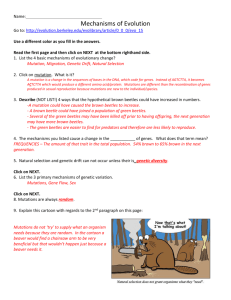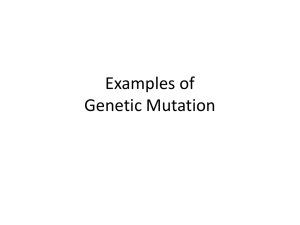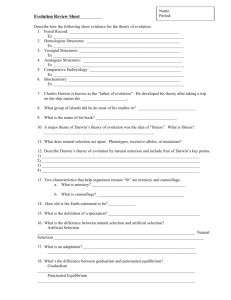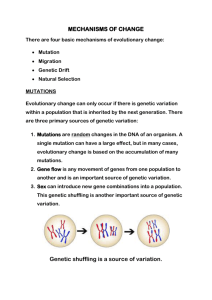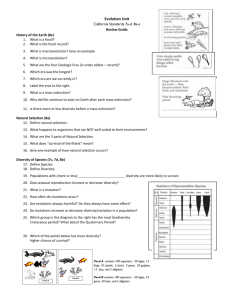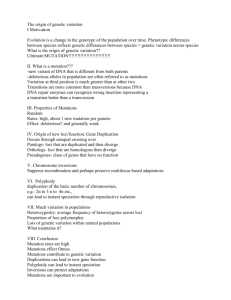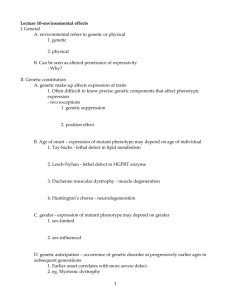Mechanisms of Evolution Webquest
advertisement
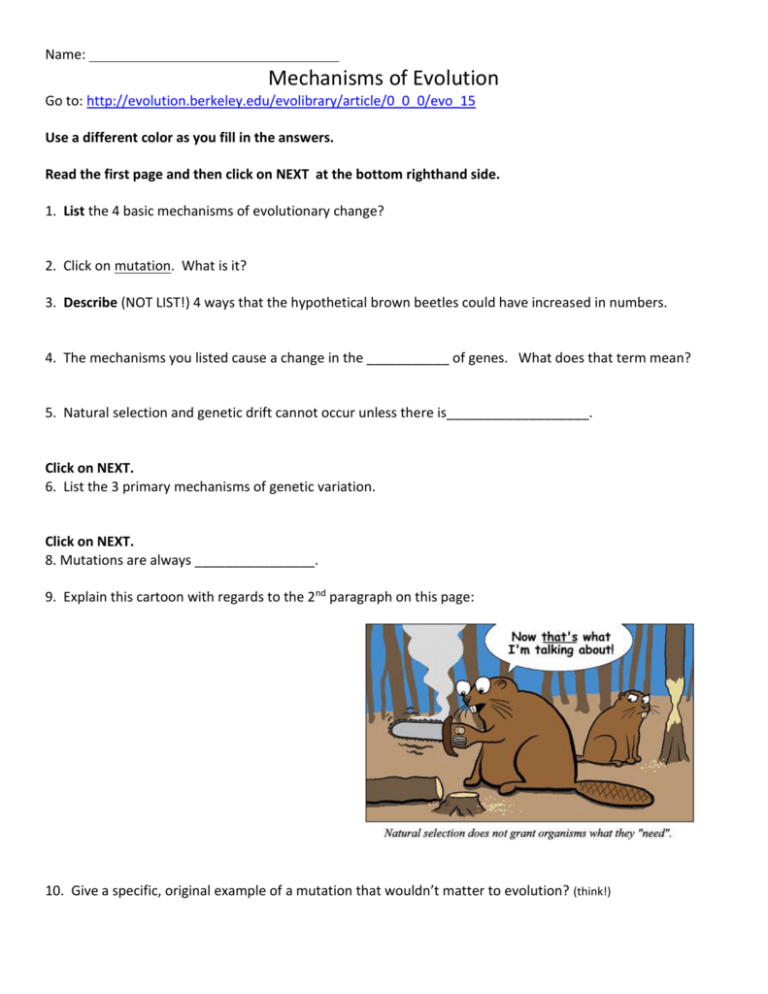
Name: Mechanisms of Evolution Go to: http://evolution.berkeley.edu/evolibrary/article/0_0_0/evo_15 Use a different color as you fill in the answers. Read the first page and then click on NEXT at the bottom righthand side. 1. List the 4 basic mechanisms of evolutionary change? 2. Click on mutation. What is it? 3. Describe (NOT LIST!) 4 ways that the hypothetical brown beetles could have increased in numbers. 4. The mechanisms you listed cause a change in the ___________ of genes. What does that term mean? 5. Natural selection and genetic drift cannot occur unless there is___________________. Click on NEXT. 6. List the 3 primary mechanisms of genetic variation. Click on NEXT. 8. Mutations are always ________________. 9. Explain this cartoon with regards to the 2nd paragraph on this page: 10. Give a specific, original example of a mutation that wouldn’t matter to evolution? (think!) Name: 11. What does it mean when it says, mutations are “random”? 12. Explain why the seeds in the apple in the picture on this slide, would not carry the genes for ½ gold ½ red. Click on NEXT. 13. Just for a refresher, what small components make up a protein? 14. When they say, “Some mutations don’t have any noticeable effect on the phenotype” what are they saying? 15. What is a lethal mutation? Click on NEXT. 16. List and explain the 2 causes of mutations. Click on NEXT. 17. What is gene flow AKA (also known as)? 18. Give 2 specific examples of how this process happens. 19. Gene flow adds genetic ________________ to a population. 20. Think of your own, unique scenario where this would be an advantage. Explain it. Click on NEXT. 21. Thinking back to our genetics chapter, how does sexually reproduction “shuffle” ones genes? 22. New combinations can be ____________, ____________ or ______________. 23. Explain how this “genetic shuffling” could be “a bad thing”. Click on NEXT. Name: 24. Explain the statement, “organism's genotype is expressed as a phenotype”. 25. What in the world is morphology? 26. What are two morphologically changes that were shown on this slide with regards to the little, basic fruit fly? 27. Look at the fetal development of snake, chicken and opossum. Why might scientist look at this with regards to evolution? Click on NEXT. 28. Summarize genetic drift in your own words. 29. Is genetic drift a random process? 30. What is an adaptation and why would this say that genetic drift does not work to produce them? Click on NEXT. 31. Draw/explain your own hypothetical (made up) example of natural selection. (no birds no bugs!) 32. If you have _________________, _________________ &___________________ you will have evolution by natural selection as an outcome. Click on NEXT. 33. What are some “cool” examples adaptations produced by natural selection? 34. What does the blue-footed booby (yes, a real bird!) have as an adaptation to attract a mate, reproduce and thus pass on its genes? 35. Give an example where we can literally “see” natural selection. Click on NEXT. Name: 36. On this page, why is the brown beetle more “fit”? 37. Is fitness constant? _____ Why or why not? 38. Is the fittest animal always the biggest, fastest, baddest (I know it’s not a word, but..) etc.?_______ Why or why not? Summarize the Main Ideas from the “Evidence for Evolution” Packet. (3-4 Sentence summary) You might want to check out this link - http://evolution.berkeley.edu/evolibrary/article/0_0_0/lines_01 Summarize the Main Ideas from this “Mechanisms of Evolution” Webquest. (3-4 Sentence summary)



